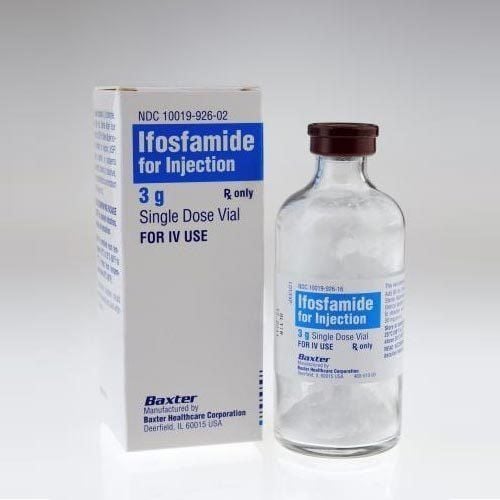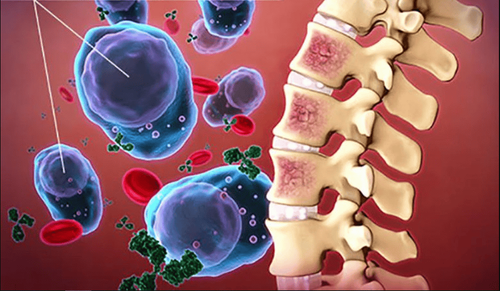This is an automatically translated article.
Bortezomib drug is a powder for injection with the main active ingredient bortezomib 3.5mg and excipients mannitol. The drug is often prescribed for patients with multiple myeloma. This is a cytotoxic drug and is a prescription drug for use only under the direction of a qualified physician.
1. What is Bortezomib?
The active ingredient bortezomib belongs to a class of anti-cancer drugs that inhibit proteasomes. When tested in mammals, bortezomib showed specific inhibition of chymotrypsin analogues of proteasome 26. On the other hand, proteasome 26 is known. to be a substance that plays a role in the breakdown of ubiquitinated proteins. Inhibition of proteasome 26 by Bortezomib is more specific to cancer cells than to normal cells, and this process helps prevent the breakdown of target proteins, altering signaling pathways signaling within the cell, affecting the cell cycle and factors in transcription, resulting in the death of cancer cells.
From the above mechanism of action, Bortezomib is usually indicated in the following cases:
Patients with advanced multiple myeloma, are adults, have previously undergone at least one course of therapy or are undergoing bone marrow transplantation. or judged unsuitable for bone marrow transplantation. Used in combination with melphalan and prednisolone to treat patients with multiple myeloma on first-line therapy, usually when patients cannot tolerate high-dose chemotherapy or cannot receive a bone marrow transplant.
2. Dosage and how to use Bortezomib
2.1. Dosage The dose of Bortezomib is calculated based on body surface area, each treatment cycle lasts 21 days. The recommended starting dose is 1.3 mg/m2 body surface area, repeated 4 times over 2 weeks (injected on days 1, 4, 8, 11). After that, the patient rested for the next 10 days (from day 12 to day 21), thus ending 1 cycle of Bortezomib treatment.
If the patient is judged to be responding well to Bortezomib, treatment should be continued for another 2 cycles.
If the patient has responded to the drug but has not achieved remission, a total of 8 cycles of Bortezomib is recommended.
When used in combination with melphalan and prednisolone, the treatment cycle of Bortezomib is extended to 12 weeks and divided into two sub-cycles of 6 weeks each. At the first 6 weeks, Bortezomib was injected on days 1, 4, 8, 11, 22, 25, 29, 32 of the cycle. At the next 6 weeks, the number of Bortezomib injections was halved, to only 4 times on days 1, 8, 22 and 29 of the cycle.
For patients with neurological disease, liver failure, kidney failure, the dose should be adjusted to ensure treatment safety.
2.2. The use of Bortezomib is recommended as follows:
Bortezomib is administered intravenously, the powder in the vial is mixed with 3.5ml of isotonic sodium chloride saline, then injected rapidly intravenously. within 3 to 5 seconds. The reconstituted medicine should only be used within 8 hours. The sensory evaluation of drug quality before injection is very important, the solution after mixing must be clear and colorless. If the injectable solution changes color or has foreign particles with the naked eye, it should be discontinued immediately and disposed of according to regulations. Bortezomib is only used intravenously, absolutely not into the subarachnoid space of the spinal cord, because fatal cases have been recorded when using Bortezomib by this route. Note, between two consecutive injections of Bortezomib, a rest period of at least 72 hours should be ensured. Bortezomib is not currently recommended for use in children because there are no studies on its efficacy and safety in this population. There are no data on the drug Bortezomib in pregnant or lactating women, if it is necessary to use the drug, it is necessary to consult and closely supervise the doctor. Because Bortezomib is a cytotoxic drug, the remaining amount of drug after use should be recovered and disposed of according to the regulations of the medical facility.
3. Contraindications of Bortezomib
Absolutely do not use Bortezomib for the following cases:
Patients with lung disease Patients with pericardial diseases (such as pericarditis, pericardial effusion, ...) with Bortezomib or mannitol
4. Precautions when treating with Bortezomib
Bortezomib regularly causes unwanted effects on the gastrointestinal tract such as vomiting, nausea, diarrhea, constipation. Therefore, patients with a history of constipation or intestinal obstruction should be monitored and treated.
The treatment with Bortezomib can change the blood count indicators such as leukopenia, decreased red blood cells and most commonly thrombocytopenia, this leads to anemia, easy bleeding. Therefore, doctors always weigh the benefits and risks when starting Bortezomib for these patients.
Studies have also shown that patients taking Bortezomib have a higher chance of getting reactivated Herpes zoster virus. Therefore, it is necessary to take measures to prevent infection with this virus strain for patients receiving Bortezomib treatment.
During the use of Bortezomib, patients often experience symptoms related to peripheral nerves such as burning sensation, paresthesia, increased or decreased sensation, neuropathic pain, ... In this case , the doctor will conduct a neurological function assessment to adjust the dose accordingly.
Orthostatic hypotension is also something that patients using Bortezomib need to be careful, the typical symptoms may be dizziness, dizziness, fainting. You should tell your doctor if you have an underlying medical condition that lowers your blood pressure or if you are taking any antihypertensive medication.
Bortezomib has also been shown to exacerbate or progress congestive heart failure, in addition to some cases of prolongation of the QT interval on the electrocardiogram. Although the etiology is unknown and the frequency is rare, patients with heart failure or cardiac-related risk factors should be closely monitored and monitored during treatment. treatment course.
Patients with multiple myeloma often have complications of kidney failure. Therefore, it is necessary to evaluate renal function regularly during treatment to control the situation.
Some liver reactions that may be encountered when using Bortezomib are increased liver enzymes, increased bilirubin, liver failure. But most of these symptoms are relieved when the drug is discontinued.
Bortezomib should be discontinued if severe immune-related reactions such as polyarthritis, serum sickness, rash, glomerulonephritis, etc.
.
5. Bortezomib drug interactions
Bortezomib drug has a potential for drug interactions when used with the following drugs:
Ketoconazole, ritonavir: these are strong CYP3A4 inhibitors, they may increase the effect of Bortezomib Omeprazole: alter change the path of the drug in the body, especially the absorption of Bortezomib Rifampicin, phenobarbital, carbamazepine, phenytoin: potentially reducing the effect of the drug Bortezomib Diabetes drugs: Bortezomib has the potential to affect the effectiveness of the drug. hypoglycemic effects of these drugs. Above is the detailed information about the use of Bortezomib, patients should carefully read the instructions before using and consult a qualified doctor. The correct use of the drug always leads to better treatment results.













